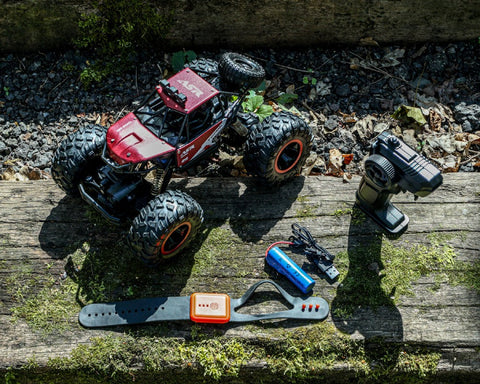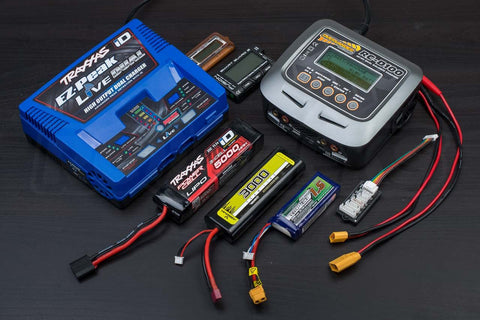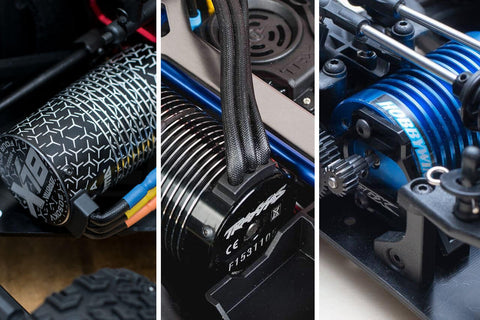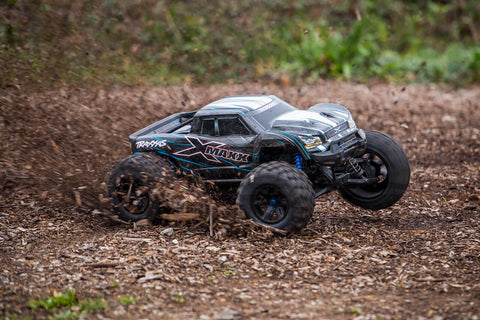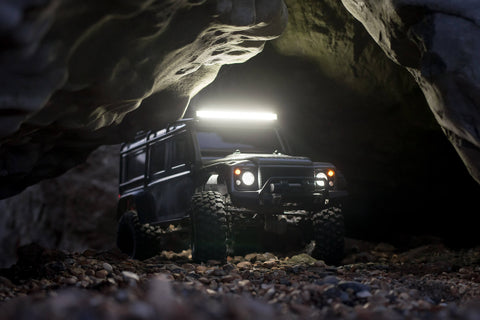At RC Geeks we are big fans of sticking FPV cameras where they probably do not belong. As such when DJI released the Ocusync air system alongside the DJI Goggles Racing Edition we were eager to try it on something other than a drone. For this experiment we will just be working with the video side of the ocusync system and not the control side. This post isn't so much a guide, more a report of our first experiences with the DJI Goggles and OcuSync Air system earlier this year. We will doubtless experiment further with the setup so keep an eye on our instagram feed and facebook page for the latest results.
What's all this noise about HD FPV?
FPV technology has steadily improved but we have seen that the vast majority of first-time users are often disappointed with the video frame size and the image quality (static breakup, noise etc). When DJI announced that they were going to be providing a system that let you use their HD downlink outside of their drones, we felt this could be the solution. For the impatient, we put together this little preview video to give you an idea of what to expect: https://youtu.be/LJ6UugiqPEMDJI Occusync Air System Unboxing
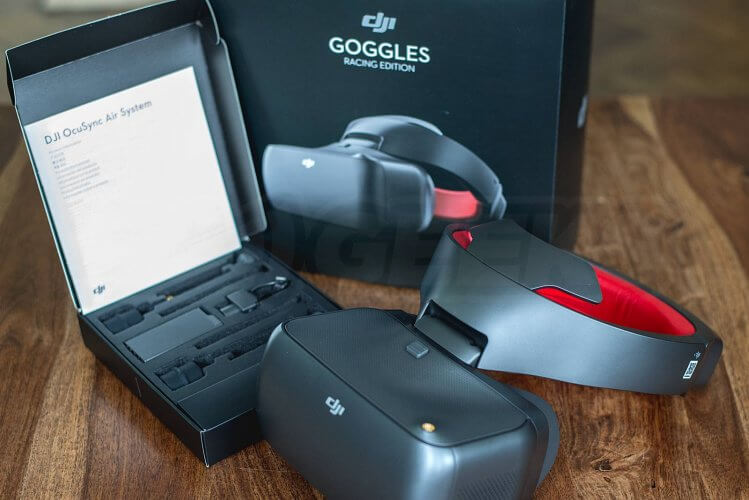 Unboxing the additional entire air system kit we can see the breadth of antennas and connections offered, alongside the core ocusync air unit and its camera.
Unboxing the additional entire air system kit we can see the breadth of antennas and connections offered, alongside the core ocusync air unit and its camera.  The air system comes with a variety of cables, mounts and antennas. We started by mounting the camera into the stand using the supplied screws. We will be using the 'GoPro' 3M 4991 tape (which is readily available on eBay) to fix this down to our model.
The air system comes with a variety of cables, mounts and antennas. We started by mounting the camera into the stand using the supplied screws. We will be using the 'GoPro' 3M 4991 tape (which is readily available on eBay) to fix this down to our model.  We created a cable from some servo spares that allowed us to connect the ocusync module to a battery plug without irreparably modifying the included loom. The 3-in-1 cable included has 6 wires but for this experiment we will only be using the red and black power lines connected to some servo wire headers, soldered to a JST plug that we can hook into a spare LiPo.
We created a cable from some servo spares that allowed us to connect the ocusync module to a battery plug without irreparably modifying the included loom. The 3-in-1 cable included has 6 wires but for this experiment we will only be using the red and black power lines connected to some servo wire headers, soldered to a JST plug that we can hook into a spare LiPo.  We slipped their plugs into a female servo cable connector and heat-shrank the plug to hold it in place. Soldering on a female JST plug at the other end of this adaptor allowed us to attach a small 1000mAh 3S LiPo battery to power it. The excess telemetry wires were secured away with more heat shrink.
We slipped their plugs into a female servo cable connector and heat-shrank the plug to hold it in place. Soldering on a female JST plug at the other end of this adaptor allowed us to attach a small 1000mAh 3S LiPo battery to power it. The excess telemetry wires were secured away with more heat shrink.
Pairing or Linking the air unit to the Goggles
With an antenna connected, power up the air unit. When the LED turns green press the 'link' button (a small push button the left the of the 'ocusync' badge on the air unit) and it will turn red. With the Racing Goggles turned on, swipe down on the touch panel with two fingers to enter the shortcut menu and select Racing Drone (Digital) > Linking Settings > Quick linking. As long as the two units are within 2m of each other they should pair (indicators on the air unit and goggles turning green) and within a few seconds you should get a picture on the goggle display.Antenna selection
The system ships with three pairs of antenna, Pagoda, Cylindrical and Dipole designs. Originally we tested our setup with the two dipole antennas as the slimline profile meant that they were easy to mount to vehicles. These omnidirectional units are fine for close up flight but can break up with distance (despite similar technology being applied successful to the Mavic drones). With some experimentation we found combining the Pagoda and Cylindrical antenna offered the best performance for us.Mounting Options
This will of course depend on the model you are attaching it two. We affixed the system to our two favourite cars to share our suggestions.Traxxas TRX-4 Defender
This was an obvious choice for our initial test rig. A highly capable yet controllable vehicle with plenty of space for easy mounting of hardware. We started by affixing the camera on the leading edge of the roof, just above the front roll bar and ran the bespoke USB-C cable up behind the windbreak.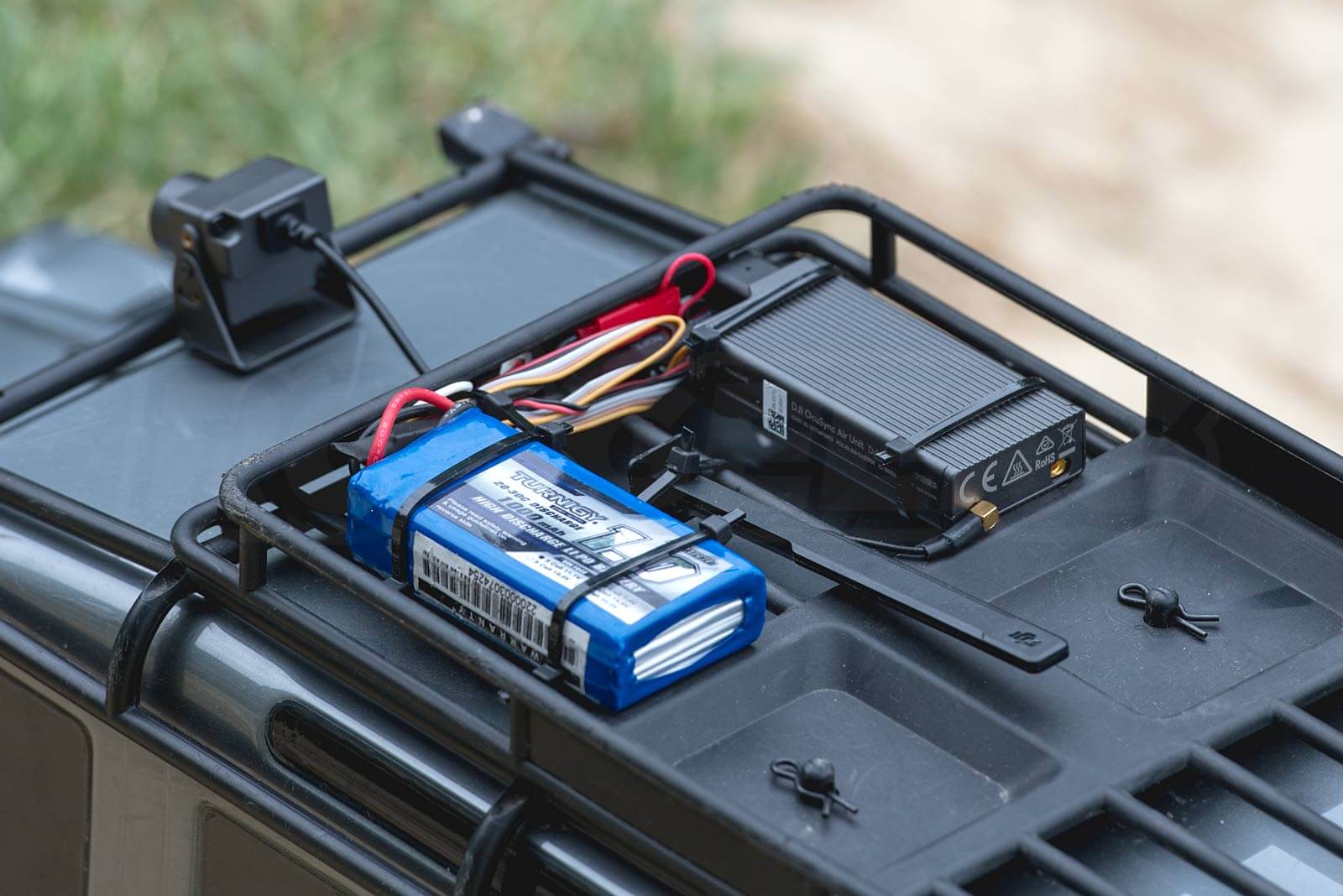 The roof rack made testing the components (in particular the swapping out of antennas) very easy. We tested just one dipole antenna, laid down across the deck to protect it from any damage in the event of a crash but as mentioned, later opted for a mix of pagoda and cylindrical antennas for best reception.
The roof rack made testing the components (in particular the swapping out of antennas) very easy. We tested just one dipole antenna, laid down across the deck to protect it from any damage in the event of a crash but as mentioned, later opted for a mix of pagoda and cylindrical antennas for best reception.  Sadly the Defender's shell makes it pretty top heavy and with our 'aggressive driving style' rolls were a fairly regular occurrence. Thankfully the cameram, air unit and antennas took a beating and carried on just fine.
Sadly the Defender's shell makes it pretty top heavy and with our 'aggressive driving style' rolls were a fairly regular occurrence. Thankfully the cameram, air unit and antennas took a beating and carried on just fine.
Traxxas Ultimate Desert Racer
This experiment was to see how well the system would perform in a more punishing environment. The fast pace of the car would also show up any latency issues. [gallery size="medium" columns="2" ids="https://cdn.shopify.com/s/files/1/0263/8469/5395/files/DJI-Goggles-RC-Car-FPV-setup-guide-ultimate-desert-racer-in-cockpit-mount.jpg|"] It is important to try and get the air-unit some airflow as its metal casing doubles up as a heat-sink and it gets hot to the touch in use, our excessively cable-tied cockpit mounting allowed for this. We experimented with mounting the camera upside down at the rear of the cockpit (since the goggles allow a 180 degree rotation in the menu) between the driver and passenger but felt the best view was achieved by mounting the camera at the rear edge of the bonnet. Here it was protected during rollovers thanks to the softly pitched A-pillars The battery was taped to the inside of the roof and the loom secured to the roll-cage uprights. Mounting the gear into a more traditional model (with basic single-piece vacuum-formed lexan shell) may bring some new challenges.
The battery was taped to the inside of the roof and the loom secured to the roll-cage uprights. Mounting the gear into a more traditional model (with basic single-piece vacuum-formed lexan shell) may bring some new challenges.
Configuring DJI Goggle options
Once the goggles are powered up, swiping a finger upwards on the touch-control-pad will bring the menu up, from there you can select the 'Racing Drone digital' option to enter the ocusync mode and access the relevant options. There are many available we will cover the ones we used. Wireless settings allows to you select which frequency you wish to use. As standard it is set to Auto but you can manually override this to select either 2.4Ghz (12 channels) or 5.8Ghz (7 channels). Camera view settings is where you select the resolution you want the system to operate on. Either 1280x720, 1280x960 or 640x480 can be selected but note that you will get differing aspect ratios (16:9, 4:3 and 4:3 respectively). DJI state that you will get the lowest latency (50ms) using the 640x480 resolution but we feel it killed the point of the hi-def system if we ran it at low-res. Screen Record allows you to record the goggles feed (something the original goggles cannot currently do). Enabling this option will allow you to use two fingers to start recording the feed locally. Zoom scale allows you to scale down the picture in the goggles which is useful if you aren't a fan of stretching a low res image over the big screens.
Recording your drives
You'll need a pair of MicroSD cards if you want to record from both devices (recommended should you somehow lose your vehicle), one for the DJI Goggles and the Ocusync air-side unit. We suggest using a bit of tape or an elastic band to secure the card in the ocusync unit. You have a couple of options for recording:On the Goggles
Assuming you have setup the 'auto record' function (under the settings menu) you can start recording on the DJI Goggles by tapping two fingers onto the side touch-controlpad. The goggles will make a confirmation tone and a small play-arrow icon will appear alongside the signal indicator on the top of the goggles. Two finger tapping again will stop the recording. Videos recorded on the DJI Goggles can be re-watched via playback under local storage.On the Air-System
Pressing the function (Fn) button on the bottom of the DJI Goggles (when you have a compatible MicroSD card in the Air side unit) will result in a confirmation beep, followed by a 'dink' sound and a REC icon with ascending timer will appear in the goggle display. The air unit will record in whatever resolution you selected in the DJI Goggles options menu. To stop recording just press Fn again. To replay these videos you will need to insert the card into a reader and view them on a computer using a video player like VLC.Ocusync in use
Once you have selected your racing drone (digital) mode to fire up the occusync, you should be able to see the down-link feed. Hooked up to the Traxxas Landrover Defender, we went through an entire 5000mAh battery just repeatedly scaling a small hill in various approaches. https://cdn.shopify.com/s/files/1/0263/8469/5395/files/hd-fpv-ocusync-traxxas-defender.mp4 The hardware is resilient, shrugging off several rolls with no issue. Overall we felt it was a great experience and different to anything we had tried before.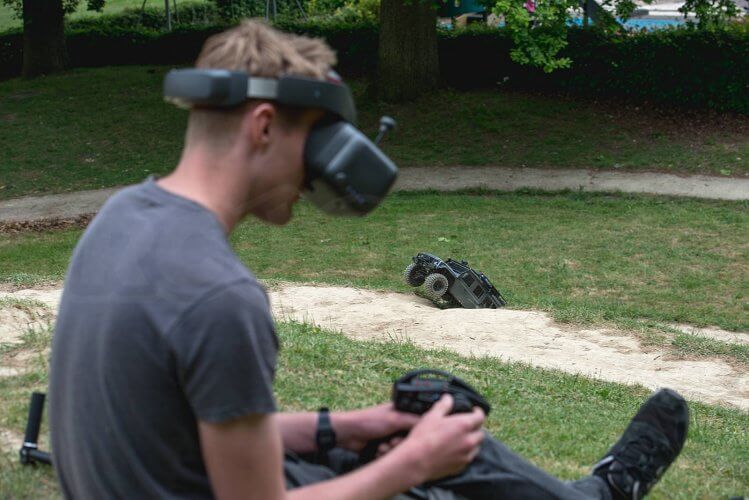 We had even more fun attaching it to the Traxxas UDR. Here we tried some higher speed driving around the local BMX pump track. The in-cockpit view offered a fantastic immersive feel, as if we were really inside the truck! [video width="1280" height="720" mp4="https://cdn.shopify.com/s/files/1/0263/8469/5395/files/hd-fpv-ocusync-traxxas-udr.mp4"][/video] The big display lets you look around the picture, allowing you to spot uneven terrain and pick a better line for your next lap. The exposure dealt well with regularly looking up at the sky on the big jumps.
We had even more fun attaching it to the Traxxas UDR. Here we tried some higher speed driving around the local BMX pump track. The in-cockpit view offered a fantastic immersive feel, as if we were really inside the truck! [video width="1280" height="720" mp4="https://cdn.shopify.com/s/files/1/0263/8469/5395/files/hd-fpv-ocusync-traxxas-udr.mp4"][/video] The big display lets you look around the picture, allowing you to spot uneven terrain and pick a better line for your next lap. The exposure dealt well with regularly looking up at the sky on the big jumps.
Should you buy ocusync for ground RC use?
If you absolutely have to have the best picture quality, the Ocusync is currently hard to beat. The One thing we found difficult getting used to was that the system will drop-out instead of 'brown-out'. Analogue FPV systems will partially degrade the image but with the digital system you will lose the picture completely when pushing the limits of the transmission distance. Another downside is of course pricing. Unless you go for the most expensive fatshark goggles, an analogue setup will come in at around half the price of this all-signing all-dancing digital one. However if you already have a DJI drone and were looking for an excuse to pick up some DJI goggles, this could be the excuse you are looking for.






